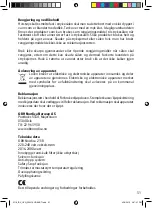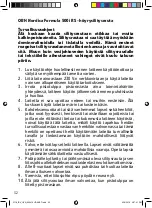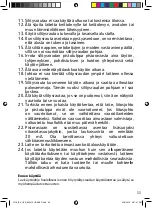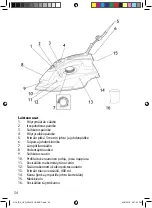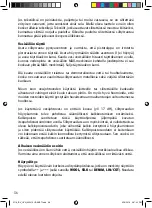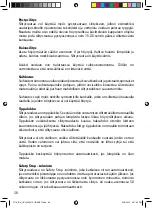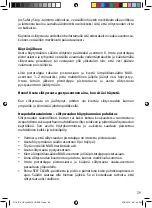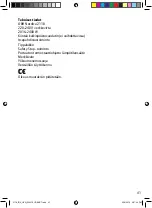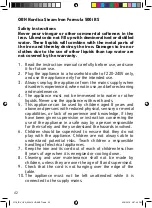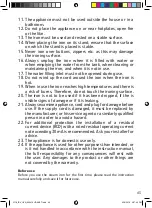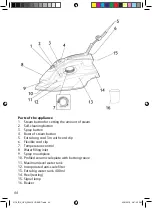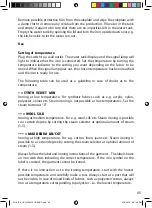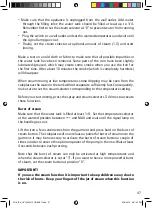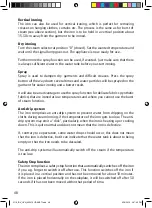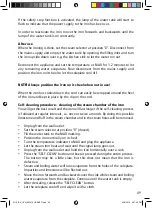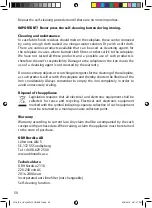
45
Remove possible protective film from the soleplate and wipe the soleplate with
a damp cloth to remove any residue from the production. Fill water in the tank
and empty it again to be sure that there are no impurities left in the water tank.
Empty the water tank by opening the lid and turn the iron upside down over e.g.
the kitchen sink to let the water run out.
Use
Setting of temperature
Plug the switch to a wall outlet. The water tank/display and the signal lamp will
light to indicate that the iron is connected. Set the temperature by turning the
temperature indicator to the setting you want depending on the fabric to be
ironed. When the signal lamp goes out, the chosen temperature has been reached
and the iron is ready for use.
The following table can be used as a guideline in case of doubt as to the
temperature.
• = SYNTH VELVET MIN
Ironing at low temperature. For synthetic fabrics such as e.g. acrylic, nylon,
polyester, velvet etc. Steam ironing is not possible at low temperatures. Set the
steam button at “0”.
•• = WOOL SILK
Ironing at medium temperature. For e.g. wool, silk etc. Steam ironing is possible
to a certain degree by setting the steam selector at optional amount of steam
(1-3).
••• = MAX DENIM LIN/COT
Ironing at high temperature. For e.g. cotton, linen, jeans etc. Steam ironing is
possible to a certain degree by setting the steam selector at optional amount of
steam (1-3).
Always follow the label and ironing instructions of the garment. The label shows
an iron with dots indicating the correct temperature. If the iron symbol on the
label is crossed, the garment cannot be ironed.
If there is no instruction as to the ironing temperature, start with the lowest
possible temperature and carefully make a test. Always start at a part that will
not be visible. In case of mixed kinds of fabrics, such as polyester/cotton, always
iron at a temperature corresponding to polyester - i.e. the lowest temperature.
2118_IDV_UVN_020413 UDKAST.indd 45
4/18/2013 4:57:45 PM

